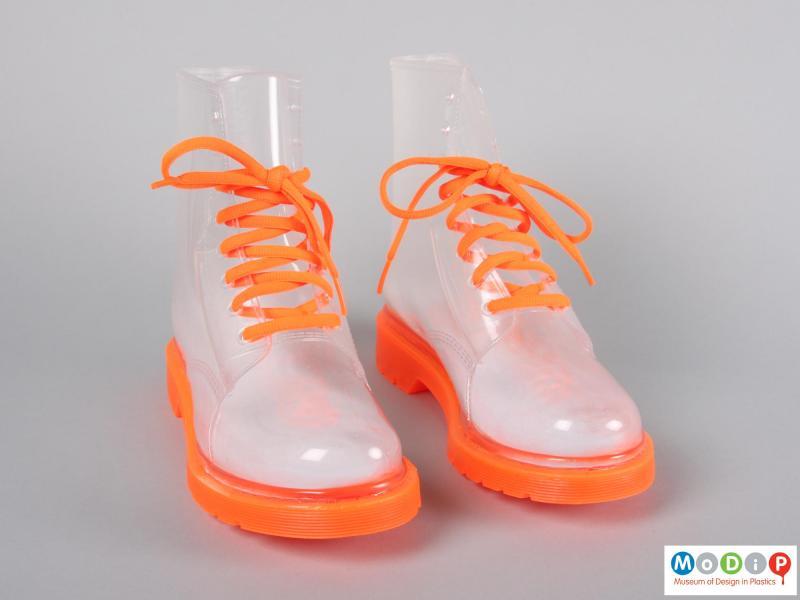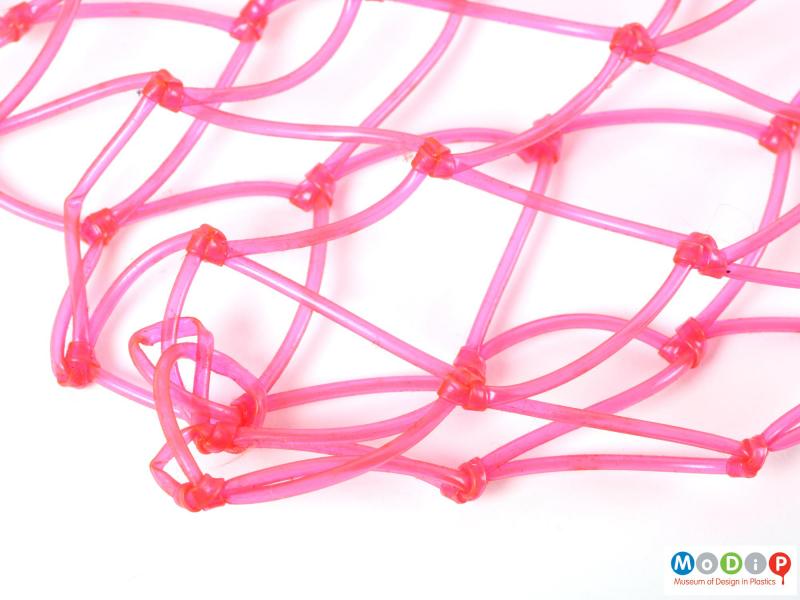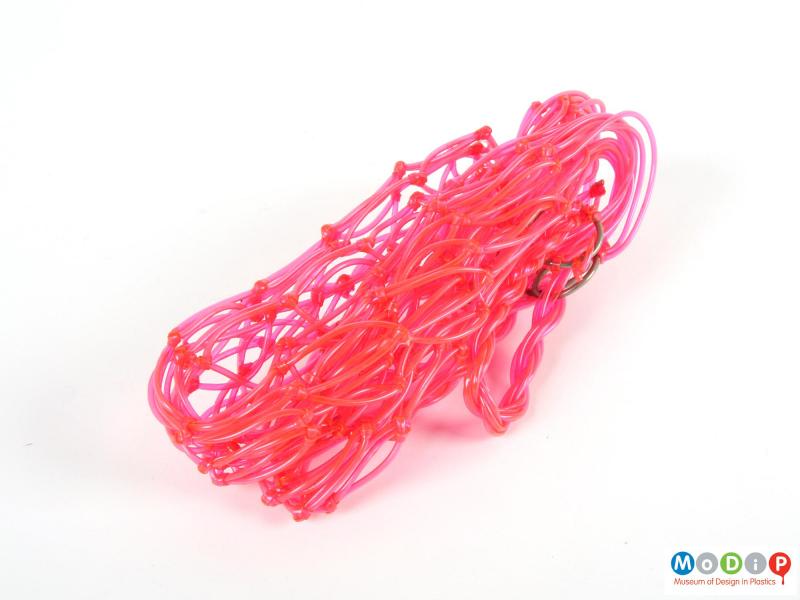
Hello and welcome back,
This week we are continuing our preservation blog series with an introduction to Polyvinyl Chloride or PVC. Past blogs in this series have focused on the importance of plastic identification when attempting to plastics. Specifically, signs of degradation to look out for and ideal storage environments for objects containing cellulose nitrate (CN) and cellulose acetate (CA). If you are interested in catching up on those posts, you can find them through the link below.
PVC is a fully synthetic thermoplastic created through the process of polymerizing vinyl chloride gas. It is one of the world’s most widely produced and consumed plastics, accounting for around 20% of all plastic manufactured, second only to polyethylene.
PVC was technically discovered twice – once in 1838 by French chemist and physicist, Henri Victor Regnault, and again in 1872 by German chemist, Eugen Baumann. In both instances, a white solid material was discovered in vials of vinyl chloride gas that had been left unattended. Neither Regnault or Baumann publicized their discoveries, so PVC was not patented until 1912, when Friedrich Heinrich August Klatte, another German chemist, developed and patented a system of polymerizing vinyl chloride gas using sunlight. Following this, production of PVC began, though materials made of PVC were limited due to the plastics extremely rigid nature. In 1926, Waldo Lunsbury Semon discovered a method of creating a flexible version of the plastic by adding plasticizers; creating a much wider market and need for materials made from PVC.
The popularity of PVC has not slowed, and it is still manufactured extensively for use in many different products. Rigid or unplasticized PVC is more commonly used for heavy duty items such as water and waste pipes, gutters, cladding, vehicle shells, and window frames. While flexible or plasticized PVC is regularly found in wire coatings, medical tubing, inflatable products, fashion items and pliable toys. The wide use of PVC makes it more likely that you may run across it in your collections, so we have a few tips to identify it, storage methods, and degradation indicators.
Identification:
- Manufacturing: PVC is a thermoplastic (can be reheated and moulded again) and is manufactured using most thermoplastic manufacturing methods. Detection of manufacturing marks may help you identify whether your object is comprised of PVC or not. Unfortunately, some of the manufacturing methods do not leave a mark, so this identification tool should be used alongside others for confirmation.
- Extrusion – A heated cylinder is fed plastic pellets which it melts and forms into a solid plastic rod. A turning screw pushes the melted plastic forward and through a die at the end of the heated cylinder, creating a continuous and uniform shape. This method is typically used for any object with an unbroken cross section (pipes, window frames and curtain rails)
- Does not leave a mark.
- Injection Moulding – Much like the extrusion method, plastic pellets are placed in a heated cylinder, melted, and pushed forward with a turning screw. Rather than being forced through a die, the melted plastic is injected into identical metal moulds through branching sprues. This method is used for mass produced objects or complicated shapes such as Lego pieces, medical components, and machine housings.
- A rough, typically circular, mark called a gate will be present where the injection sprue and mould met. Small circular marks on you object may be left behind from ejector pins.
- Thermoforming – A preformed sheet of warmed material is draped over a former or mould. This method is often used for objects with an open structure such as bowls and dishes.
- Does not leave a mark.
- Calendering – Plastic pellets are melted with heat and pressure through an extruding machine. They are then thinned into a sheet of plastic by calender rolls of which the speed and temperature of can be adjusted for various effects.
- Does not leave a mark.
- Extrusion – A heated cylinder is fed plastic pellets which it melts and forms into a solid plastic rod. A turning screw pushes the melted plastic forward and through a die at the end of the heated cylinder, creating a continuous and uniform shape. This method is typically used for any object with an unbroken cross section (pipes, window frames and curtain rails)
More information and a video explaining each manufacturing method can be found here –
https://www.modip.ac.uk/plastics/manufacturing-processes
- Smell: PVC does not give off a significant or recognizable scent.
- Design: Used for a wide variety of objects
- Rigid PVC – mainly heavy duty, waterproof and outdoor equipment.
- Flexible PVC – wire coatings, inflatable objects, fashion, and malleable toys.
- Inscription: There are many trade names for PVC – if there is an inscription on your object a quick research session should help you identify it as PVC or not.
Degradation:
PVC is very chemically unstable, especially in its plasticised or flexible form, so proper storage and condition checks are vital in slowing down the degradation process. Listed below are the recommended environmental levels for storing objects containing PVC and indications of degradation to be on the lookout for.
Ideal Environment:
- Stored in a space with a temperature between 18-20 °C and a relative humidity between 45-65% RH (fluctuations of 5% are tolerable in 24-hour period).
- The storage space should be well ventilated and dark with light levels around 50 to 150 lux – the object should be kept within a ventilated archival box to prevent introduction of dust and foreign material.
- A useful list of archival material - https://www.modip.ac.uk/projects/curators-guide/care-plastics/useful-ma…
Signs of Degradation:
- In flexible PVC, plasticizers often work their way to the surface of the object leaving behind a sticky surface which will result in the object becoming brittle over time.
- Changes to the colour of your object over time indicates a level of degradation as well. PVC materials come in various colours and hues, though the colour usually darkens or yellows (transparent objects) during degradation.


We hope this short guide has been useful in helping you identify and care for objects made of PVC. Please check this space for more content on plastic preservation and exciting news about MoDiP.
Shannon Carr, MoDiP Collections Officer
References:
https://www.bpf.co.uk/plastipedia/polymers/PVC.aspx
https://www.modip.ac.uk/projects/curators-guide/plastics-materials/polyvinyl-chloride
https://www.piper-plastics.com/2017/03/27/a-brief-history-of-pvc/
